
Although we are rich in antique spinning wheels in Maine, antique Lazy Kates are hard to come by. A Lazy Kate is a bobbin holder, usually for three or four bobbins. Most often used for plying, they can also serve as bobbin storage.

Perhaps they are scarce in Maine because much of the spinning done here in the 18th and 19th centuries was to produce singles linen and wool for weaving. With singles, the spun thread or yarn could simply be reeled off the wheel without removing the bobbin. Not surprisingly, we have an abundance of antique reels and bobbin/pirn winders here.
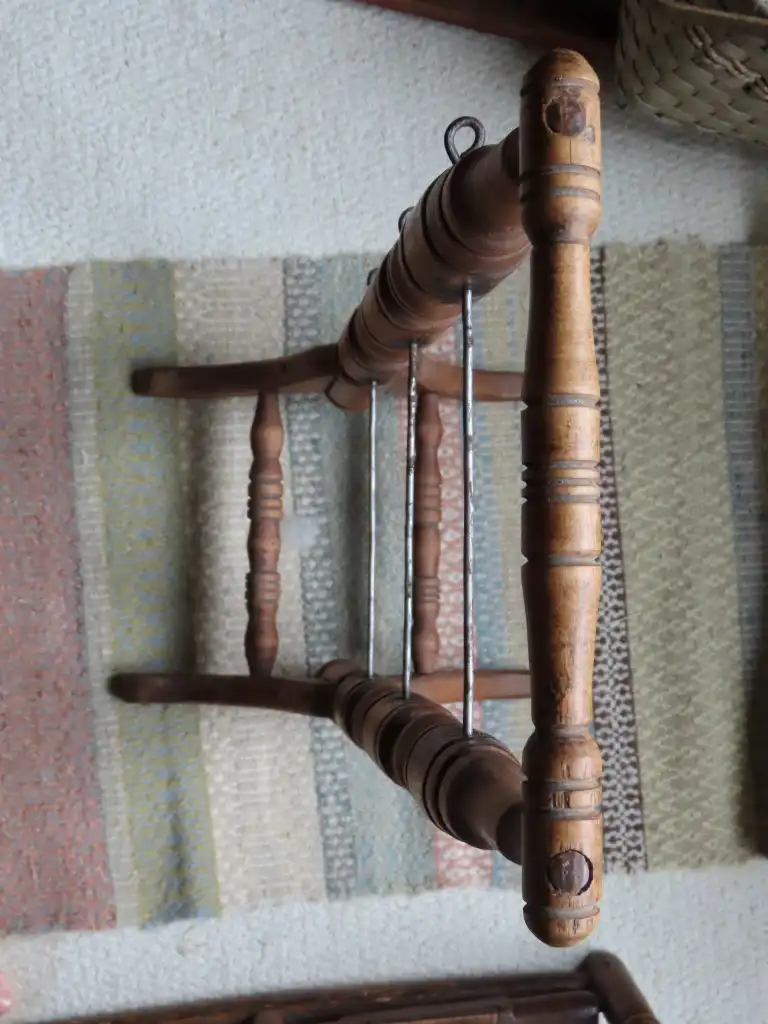
In Quebec, spinners also tended to leave bobbins on the wheel, reeling multiple bobbin-loads onto a wrap reel, called a “dévidoir.” Spinners would then simply ply directly from the dévidoir, a wonderfully efficient system that made it unnecessary to have multiple bobbins or a Lazy Kate.

In any case, Lazy Kates seldom come up for sale in New England. And those that do seem to have no similarity of design or construction. The three I have found are wildly different from each other.

This tall Kate for three bobbins has slightly mismatched turnings.

The base manages to be both sturdy and graceful.

It looks as if it may have been made with spare pieces from furniture making.

As with spinning wheels, the makers of Lazy Kates were not content to produce objects that were just utilitarian.
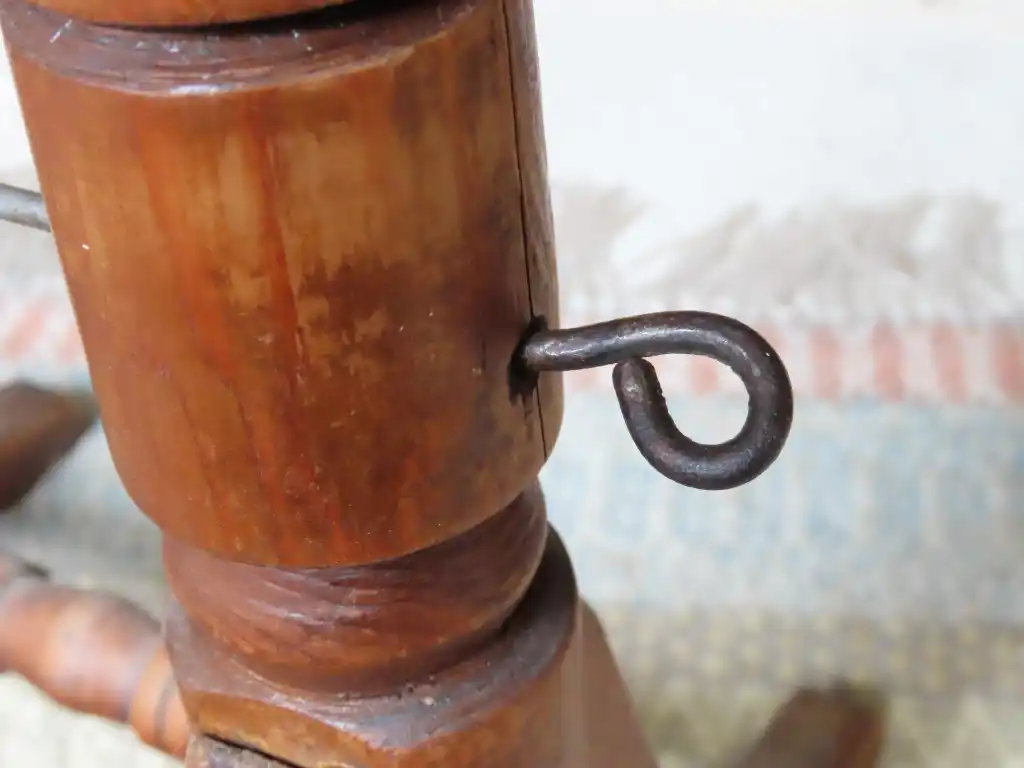
Instead, they approached these simple tools with creativity and style, leaving an imprint of time, place, and their own personalities.

This petite three-bobbin Kate was found in a New Hampshire antique store.

It is unusual and impressive due to its extreme bentwood arch,

nailed into a plain unfinished base.

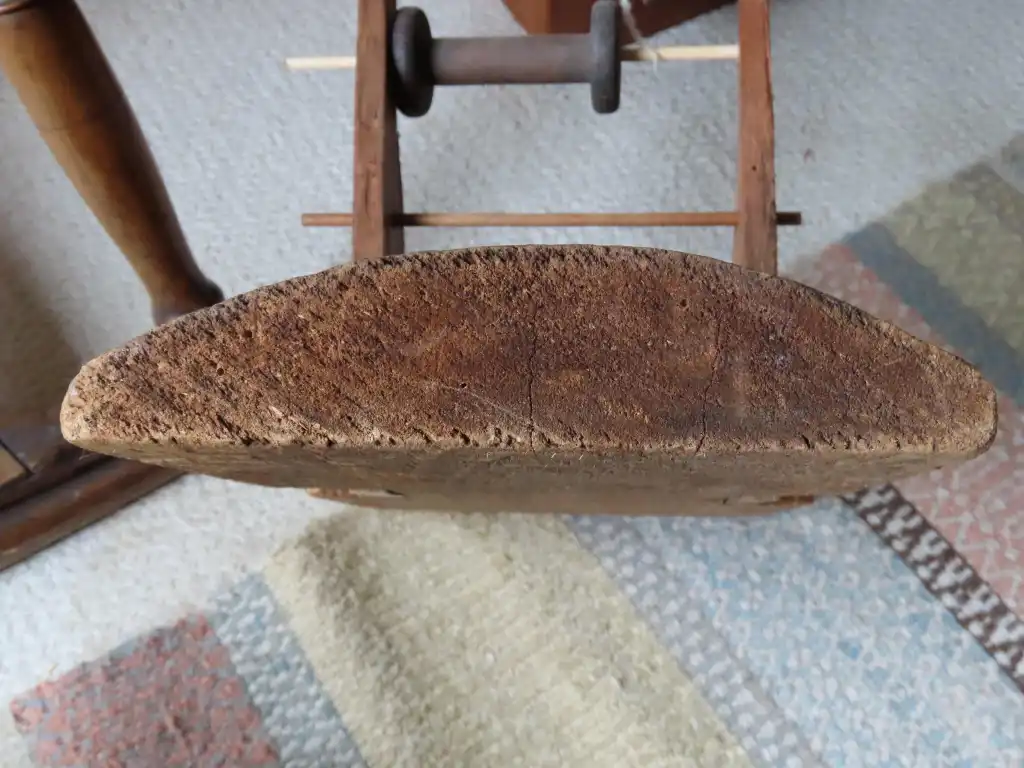
The rough bottom shows saw marks.

In contrast, this Kate, found at an antique show in Maine, is well-finished with paint and pegs.

The top is designed for comfortable carrying and shows paint wear, presumably from being handled.


Surprising to me, it also has initials “EiS” stamped on the side.

Because the paint color and initials look much like those on Scandinavian wheels,

I wondered if this Kate may have come from there.

But, its general style does not resemble the Scandinavian Kates that I’ve seen, so its origin remains a mystery.

Aside from the Kates I found in the US, I have two Kates from Scandinavia.

The first is one typical style found there–upright with two bobbins on each side. Painted, with an 1871 date and puzzling letters.

Is it two sets of initials, perhaps, or initials and abbreviated words?

It may have been a wedding or birthday gift.
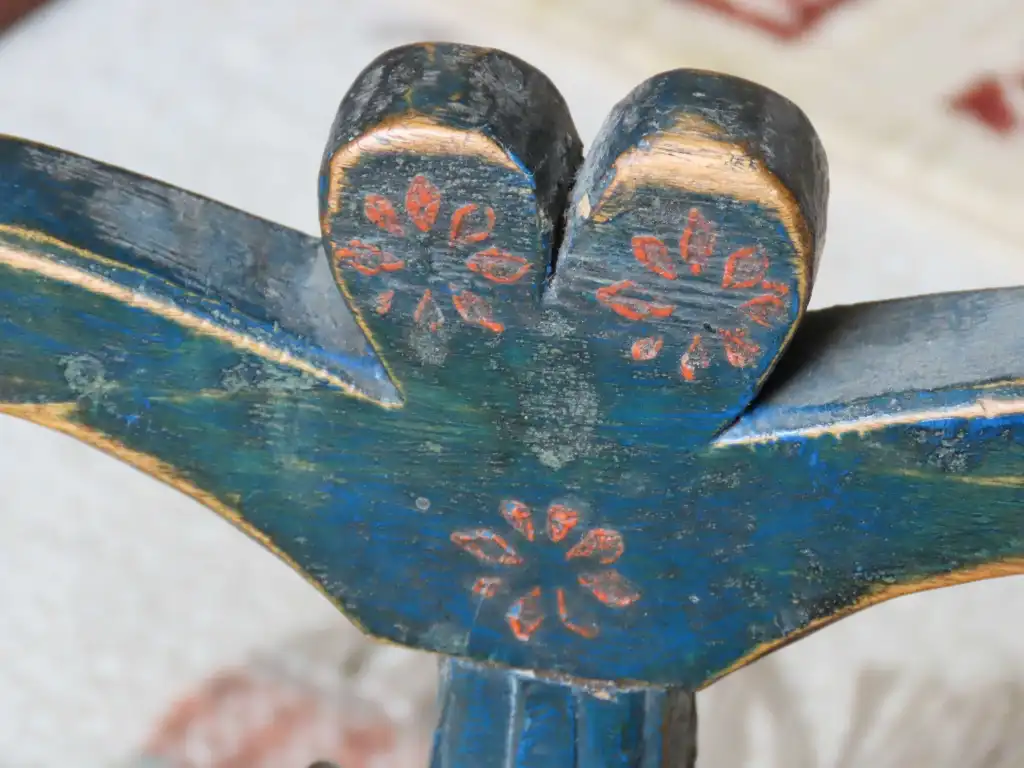
I have seem this general design and the coiled handles on the bobbin supports on a few Kates from Finland,

so this one may be Finnish or maybe these features were common in Sweden or Norway, too. As with the other blue-painted Kate, this one shows paint wear from being carried around.

The second Scandinavian Kate illustrates another common style there.

It is like a wooden basket, with four bobbins and a bottom that can provide extra storage for small items.


This one is an especially striking example,



with precise, intricate carving that throws ever-changing shadow dapples.

What an investment of time and care in its creation.
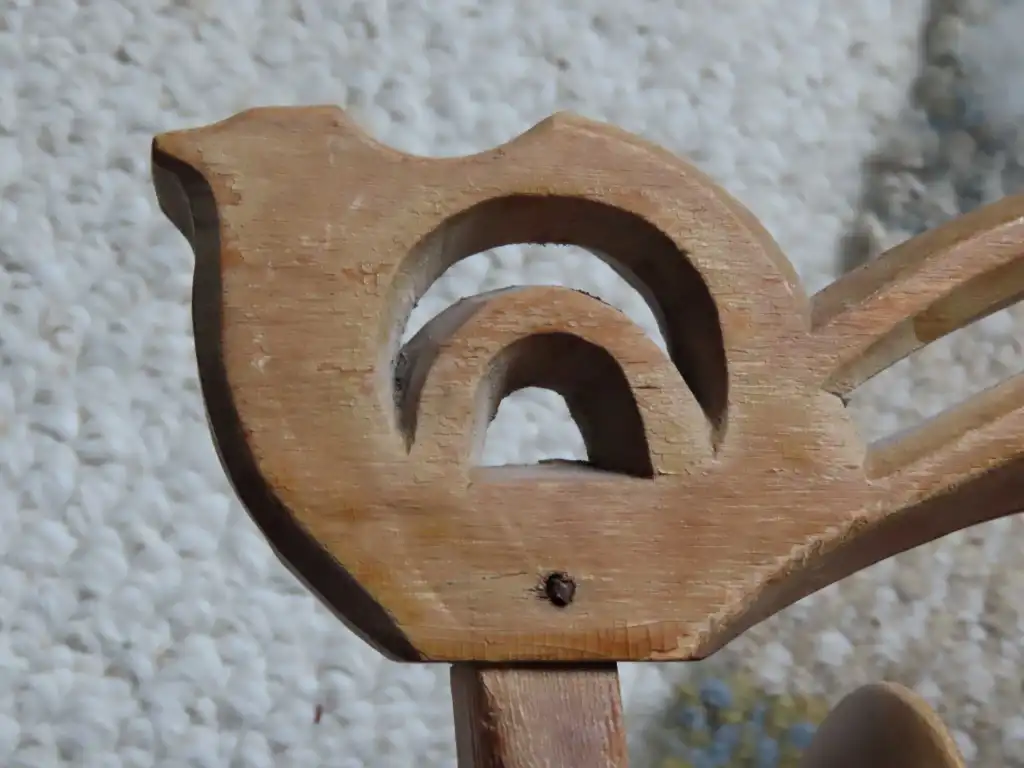

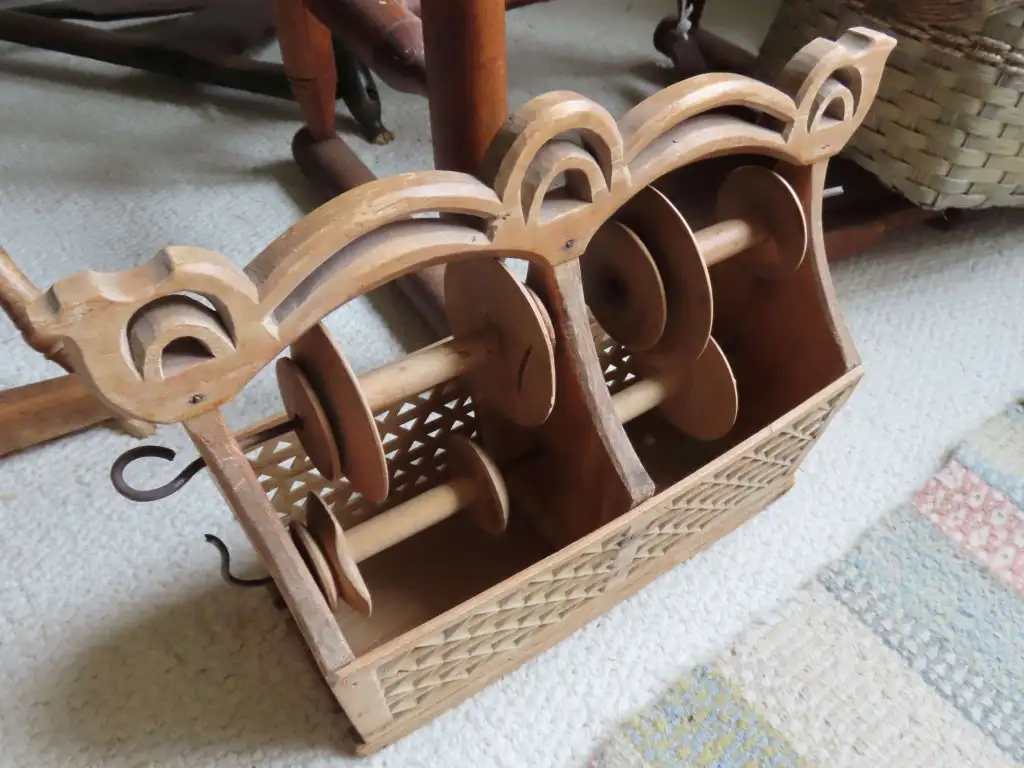
Aside from portable Lazy Kates, some wheels have “on-board” bobbin holders. A few North American makers, such as Joel Farnham and Samuel Morison made wheels with built-in bobbin holders–usually for just one bobbin. Norwegian wheels, on the other hand, often seem to have on-board Kates for two bobbins. I have not been able to determine if they were used primarily for bobbin-storage, or for plying, or both. We do see old wheels in other regions where extra bobbins were simply hung from the wheels. Some were used for spinning flax, such as the wheel in this photo from Switzerland, so the extra bobbins likely were not for plying, but simply spares.

But some Norwegian wheels have holders that would allow for plying.

For example, the wheels marked “OAP” have two vertical holders, placed so that they could be used for plying.

(Interestingly, the paint color on this wheel appears to be just the same as the stand-along Kate with the “EiS” initials.)

Double table Norwegian wheels also often have on-board horizontal Kates. The one on this acanthus-carved wheel could be used for plying.

But, on this Norwegian wheel

the horizontal holder is angled in such a way that plying would be awkward.

For some reason, there appears to be little research on Lazy Kates. The origin of the name, for example, seems to be a total mystery. Does the “Lazy” tell us anything about how these tools were used or viewed? Information is scarce on where, when, and how they were used historically, why some regions had them on wheels, or whether the built-in Kates were used for plying. So, much is left to speculation and assumptions. Another area ripe for research …


